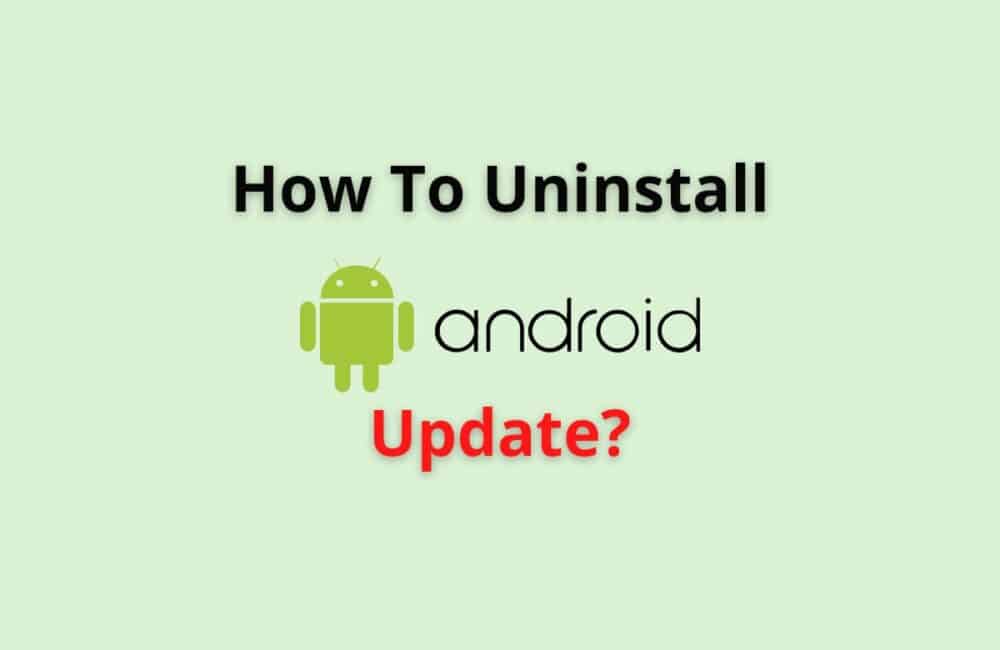People update their android phones to fix bugs, make them more secure, and keep pace with the trend and technology. People think that updates are usually more convenient to handle than older versions.
But some updates are complex and complicated to handle. Therefore, uninstalling those updates is the only solution a user has.
If you are one of them and are not aware of how to uninstall an Android update, stick to this post.
Can You Uninstall Updates On Android?
Yes, you can uninstall updates on your android device. You can uninstall the new updates for system apps, but you cannot carry the same process in third-party apps or user-installed apps.
However, when it comes to uninstalling the latest updates of the Android version, the process is quite lengthy and complicated.
Therefore, it is not usually recommended to downgrade the Android version.
How To Uninstall Android Update?
Steps To Uninstall Android Update:
Step 1: Open Settings App
Hover over the setting on the system and turn on the developer option.
Step 2: Tap On The “About Phone” Option
Explore the ‘about phone section and then click on build number, and you will receive a message that you are a developer now.
Step 3: Allow USB Debugging
You can enable USB debugging under the developer option and enable OEM unlocking.
Step 4: Connect Your Phone To Your Computer
You can connect your phone to a computer with the use of a USB cable.
Step 5: Look For SDK Tool Folders
On your PC, you need to file the location where SDK platform tool folders are stored and keep the installed android factory images there. They are found in a ZIP file that has IMG files.
Step 6: Open Factory Image
Open the factory image in the platform tool folder. Then hold Shift and right-click in the window and choose the open power shell window here. You need to type the adb file to see whether your phone is detected or not.
If it is, you need to check the serial number. If it is not visible, try using another USB cable. Boot your mobile into fast boot mode. Type the following command:
adb reboot bootloader
Step 7: Unlock The Bootloader
Suppose you want to install the previous version. You need to unlock your phone bootloader; this is to be done under fast boot mode.
Then confirm once that your bootloader is unlocked and move further. You need to unlock your phone bootloader as, without it, you can’t install the previous version of Android.
Write fastboot flashing unlock. After the confirmation of the unlocked bootloader, your device will be wiped.
Step 8: Install The Older Version
If some creators include ‘flash all’ the script as a part of the download factory image, then it will automatically flash everything on your screen system.
It needed to be in the SDK platform-tools folder with the extracted IMG file.
Step 9: Double Tap On The Flash-All Bat Script
As the flashing process starts, you will receive a notification, and do not unplug your device at that time. If you don’t see the flash-all script option, then you have to flash everything manually.
Then you need to type the given commands in sequence.
fastboot flash bootloader [bootloader file name]. img
fastboot reboot-bootloader
fastboot flash radio [ radio file name]. img
fastboot reboot-bootloader
flash boot flash – w update [ image file name]. zip
After this process, your phone should restart. And later, you can run a downgraded or older version of Android again on your device. You need to set up your phone from the beginning now.
Also Read: How To Send A Voice Message From iPhone To Android?
Conclusion
So, you can easily uninstall the app update as per your wish by following the method given above.
Updates usually occur to make mobile bug free, to maintain security, and to keep people informed of forthcoming trends or technology.
Therefore, it is usually not recommended to uninstall Android updates.



